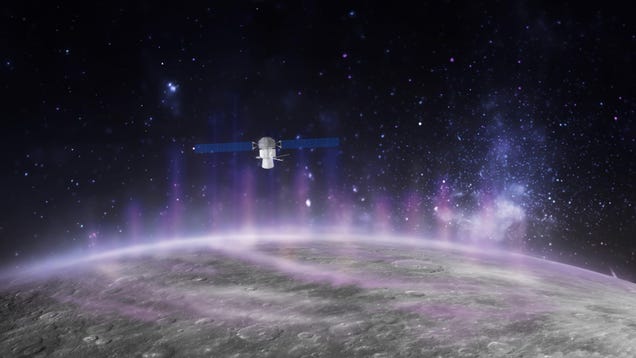On October 1, 2021, a pair of small spacecraft got their first good look at the closest planet to the Sun, revealing the strange process through which Mercury produces its own auroras.
BepiColombo, a joint mission by the European Space Agency (ESA) and Japanese Aerospace Exploration Agency (JAXA), launched in October 2018 and is still on its way to enter Mercury’s orbit in 2025. Until then, the spacecraft duo has been conducting a series of six flybys of Mercury, using the planet’s gravitational pull to settle into its orbit.
Data collected from the mission’s first flyby gave scientists a rare glimpse at the unique interaction between charged particles from the Sun and material on the surface of Mercury, creating the planet’s X-ray auroras. The findings from the data were published Tuesday in the journal Nature.
The mission is made up of two orbiters: ESA’s Mercury Planetary Orbiter, which will scan the planet’s surface and interior, and JAXA’s Mercury Magnetospheric Orbiter, which will study the planet’s magnetic field. The two spacecraft will remain connected until they achieve a stable orbit around Mercury, which is expected to occur two years from now.
During its first flyby, BepiColombo flew over Mercury’s surface at a close distance of around 200 kilometres. Using plasma instruments on board the JAXA orbiter, BepiColombo observed different kinds of charged particles from the solar wind in the vicinity of Mercury.
The electrons being emitted by the Sun appeared to accelerate in Mercury’s magnetosphere, the region around a planet dominated by its magnetic field. Subsequently, these electrons are carried from the magnetosphere’s tail section toward Mercury, where they eventually rain onto its surface. The charged particles interact with materials on Mercury’s surface, causing a fluorescence of X-rays to be emitted that result in an auroral glow on the planet.
Earth is not the only planet that witnesses the breathtaking northern and southern lights. NASA’s MESSENGER probe was the first to observe Mercury’s auroras in 2012, detecting fluorescent X-ray emissions produced on the planet’s surface. Mercury’s auroras glow in X-ray wavelengths because the electrons slow down once they hit the planet’s rocky surface and the lost energy is released in the form of X-rays.
Auroras on Earth are produced by charged particles from the Sun interacting with gases in the planet’s upper atmosphere. Mercury, on the other hand, has a much thinner atmosphere than Earth’s, therefore the process that triggers its auroras has never been fully understood.
“While Mercury’s magnetosphere is much smaller than Earth’s and has a different structure and dynamics, we have confirmation that the mechanism that generates aurorae is the same throughout the Solar System,” Sae Aizawa, a researcher at JAXA’s Institute of Space and Astronautical Science and lead author of the new study, said in a statement.
BepiColombo’s most recent flyby was on June 19, during which the spacecraft captured some stunning new views of Mercury. The mission won’t rendezvous with the planet again until the fourth gravity assist scheduled on September 5, 2024.
For more spaceflight in your life, follow us on Twitter and bookmark Gizmodo’s dedicated Spaceflight page.
